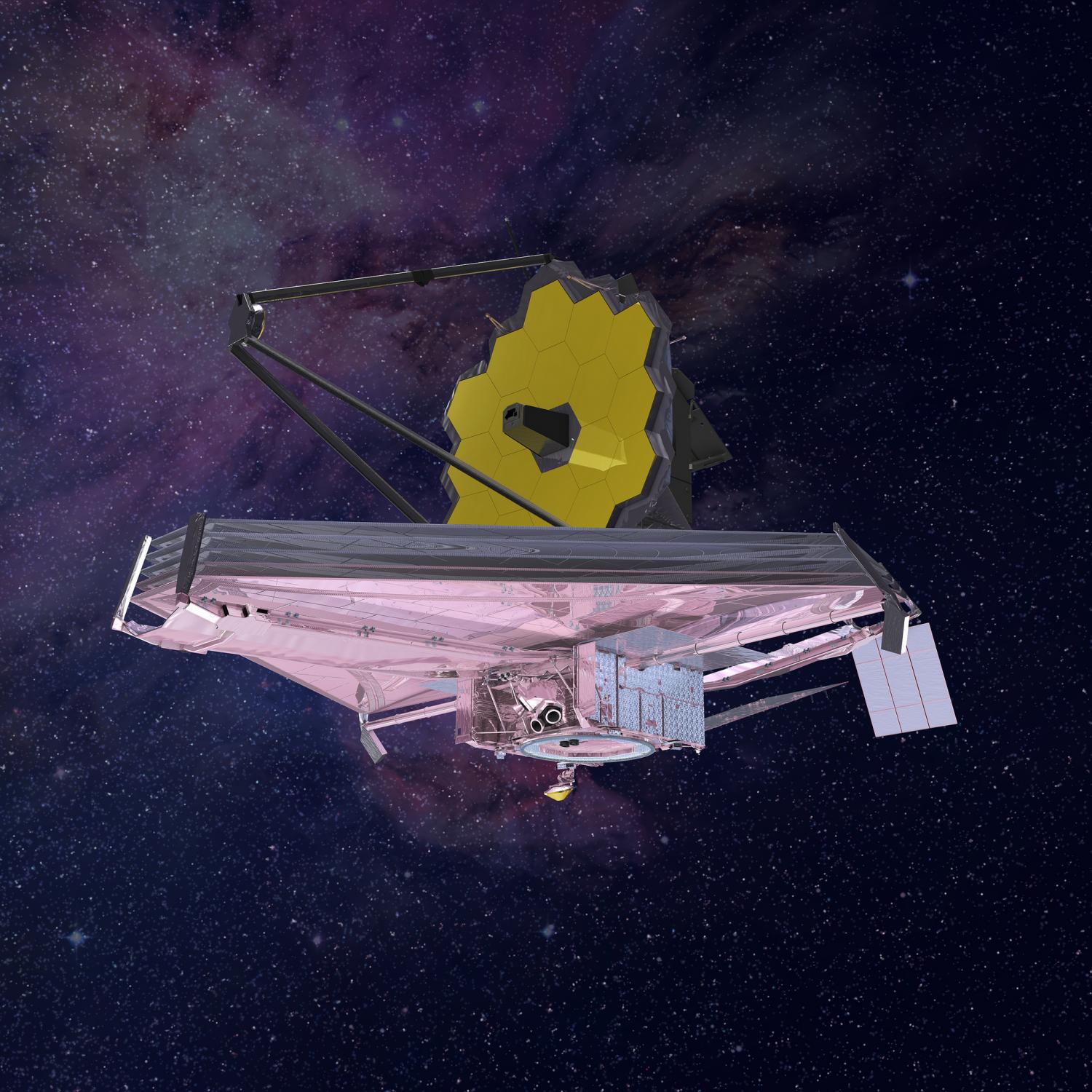The James Webb Space Telescope
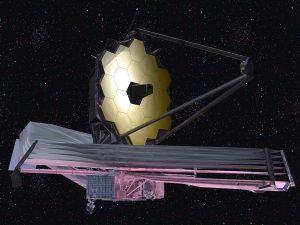
James Webb Space telescope. Credit: NASA
‘The Webb’
The James Webb Space Telescope launched on Christmas Day, 2021.
Its sunshield deployed and the mirror unfolded a few days later .
So what is special about this telescope? What will it do?
And what is Wonderdome’s connection with the Webb?
Read on!
Basics
The Webb is an infrared telescope, the successor to the Hubble Space Telescope.
NASA began development in 1996. ESA, the European Space Agency and CSA, the Canadian Space Agency joined later as as junior partners.
NASA’s Goddard Space Centre in Maryland controlled the project, with Northrop Grumman the main contractor.
They assembled the telescope at their facility in Rodondo Beach, California.
A European Ariane 5 rocket launched the Webb from the space centre in French Guiana.
The final cost was an astronomical $10 billion.
Infrared Astronomy
The electromagnetic spectrum covers wavelengths from short gamma rays to long radio waves.
Infrared radiation, heat radiation, lies just beyond the red of visible light.
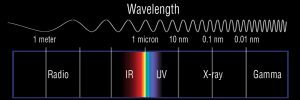
Electromagnetic spectrum. Image: NASA
Infrared passes through interstellar dust and gas much better than visible light so it can detect dim, distant objects much better.
And because of cosmological redshift, infrared telescopes can see further into space and back in time.
Mission goals
The Webb has four main objectives:
- Finding the first stars and galaxies that formed after the Big Bang.
- Studying how galaxies were created.
- Investigating further how stars and planets are made.
- Exploring exoplanets, planets around distant stars and looking for evidence of extraterrestrial life.
A difficult start
The project began in 1996 with a budget of $500 million and a target launch date of 2007.
It began life as the Next Generation Space Telescope, NGST.
NASA renamed the telescope in 2002 for James Webb, NASA’s boss in the time of the Apollo missions.
Technical and financial problems delayed the project and the plans were reviewed and changed in 2005.
After this, the project was back on course but the launch date was put back to 2017.
Construction and testing
The revised design was completed by 2011 and work began on building the instruments.
The components and instruments were ready for testing by 2016.
These tests revealed more technical issues, delaying the launch date to 2020.
The telescope was eventually assembled in 2019 and successfully passed the final rigorous tests.
The Webb was shipped from California to French Guiana in 2021.
It was finally starting its journey into space.
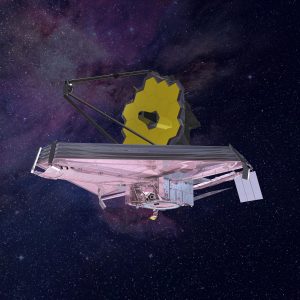
Webb Telescope: Credit Northrop Grumman
The Telescope
The telescope mirror is 6.5 metres across, compared with Hubble’s 2.4 metres.
It has over five times the light-gathering power of Hubble.
The mirrors are made of beryllium, coated with gold.
Beryllium is a strong, lightweight metal that hold its shape across a range of temperatures.
Gold is efficient in reflecting yellow and red wavelengths of light together with infrared, heat radiation.
Because a single mirror of this size would not fit into any rocket, it is made of 18 hexagonal segments.
The segments were folded together inside the rocket.
Small motors can move the segments slightly so they work as a single mirror.
The mirror collects infrared radiation. It must be very cool to do this.
Its working temperature is -233 C, just 40 degrees above absolute zero.
To keep the optics cold there is a huge sunshade on the sun side of the telescope.
Five layers of polymide film coated with aluminium make up the shade, each sheet thinner than kitchen foil.
Folded 14 times to fit into the rocket, the shield unfolded once in orbit.
Fully deployed, the sunshade is as big as a tennis court.
Below the shade is the spacecraft bus which contains all the computing and communication systems for the mission.
The computers collect and store observing data before transmitting them back to Earth.
They also control the position and attitude of the spacecraft.
Two small rockets maintain the spacecraft in orbit whilst even smaller thrusters keep the Webb pointing the right way.
Launch and deployment
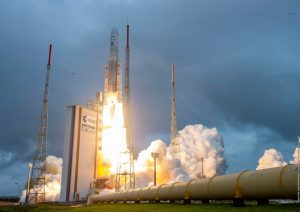 n
n
JWST launch. Credit: NASA
After more delays, the Webb finally launched on Christmas Day, 2021.
A European Arianne 5 rocket took the Webb into space from the space centre in French Guiana.
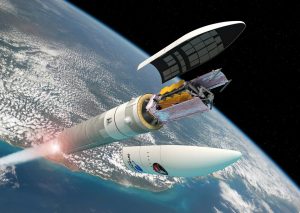
Webb telescope after launch, artist impression. Credit:ESA
Once safely in space, the sunshield unfolded beneath the mirror.
Ten days later, the segmented mirror unfolded and the Webb was fully deployed.
Unusual orbit.
The Hubble Space Telescope has a regular orbit around 570 km above the Earth.
The Webb will orbit much further away, at a distance of 1.5 million km.
This is at the Lagrange 2 or L2 point, where the pull of the Sun balances the gravity of Earth.
Here the Webb’s sunshade can block heat from the Earth and the Sun at the same time.
The telescope will loop around the L2 point to avoid the shadow of the Earth.
Unlike Hubble, spacecraft cannot service the Webb because of its distant orbit.
First light
The first test images from Webb may come in March but we’ll probably have to wait until June for high resolution images.
Our Wonderdome blog will report when the Webb is fully operational.
Follow the Webb
NASA has a fun website, Where’s Webb, showing its distance, speed, temperature and more.
And for more information, NASA has an easy-to-read Webb Q & A.
Wonderdome and Webb
In May 2019, at the National Space Centre, Wonderdome presenters met UK scientists and engineers working on the Webb.
Their instrument is MIRI, the Mid-Infrared Instrument.
We received a full dome video about the Webb Telescope.
If you invite Wonderdome to your school or event, you might ask the presenter to include this sequence.
Would you like to hear more stargazing tips and Astronomy news?
Do you want to to find out about our upcoming public events?
Follow WonderDome Portable Planetarium on Twitter and Facebook or go to our web site wonderdome.co.uk!
The author: Dennis Ashton is a Fellow of the Royal Astronomical Society and a Wonderdome presenter.

